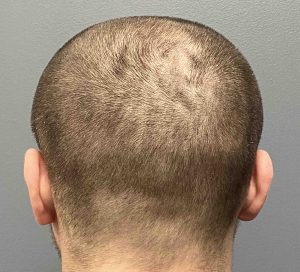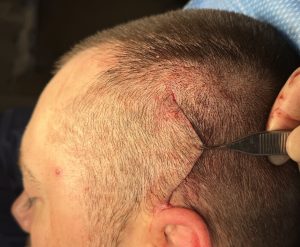Background: While there are many aesthetic head shape concerns one of the common types is the width of the side of the head. Excessive temporal width or a convex head shape from the front or back view is an almost exclusive male concern due to its visibility with short or no hair. There are certain types of men who are predisposed to large temporal regions based on head size, natural thickness of tissues and even ethnicity. In some men the temporal hypertrophy shape can be seen to be almost like a light-bulb shape.
Because of these concerns the temporal reduction procedure was developed based on knowledge of the location and size of the temporal muscle. While it is anatomically accurate that the temporal muscle only makes up a portion of the thickness of the side of the head, it represents the easiest target for reduction. With no adverse functional sequelae from subtotal muscle removal and being able to be done in a scarless manner it is the most logical approach to head width reduction.
While effective for many patients it is not as effective for some if the other components of the side of the head (bone and scalp) are a significant part of its shape.There are more extensive approaches, including temporal bone burring reduction and even temporal scalp tucks, that provide even greater amounts of improvement but at the tradeoff of a visible scar along the side of the head. For this reason it is rarely a primary approach and is only rarely employed in the most motivated of patients who want more than what the primary temporal reduction procedure has achieved.
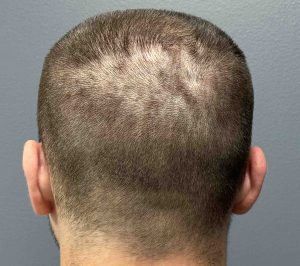
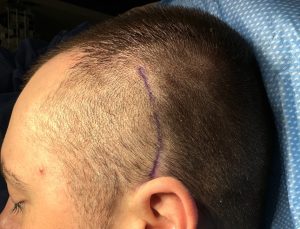
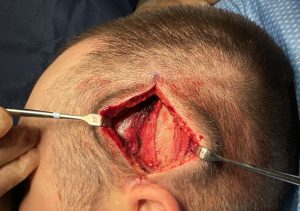

Additional muscle release and resection was done anteriorly into the temporal fossa.
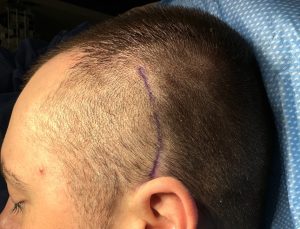
Considering that many temporal reduction patients are male the creation of a visible scar on the side of the head is an understandable unacceptable aesthetic tradeoff for the benefits of the procedure for most of them. While many patients believe, and some are correct, that bone reduction would also be beneficial the scar tradeoff to do so is the limiting issue. But if so desirous the vertical side of the head incision provides access, whether it be a primary or secondary procedure, for maximal heard width reduction.
Key Points:
- 1) Temporal reduction for many patients is an effective treatment for reshaping the wide or convex shaped side of the head..
2) Primary temporal reduction is a scarless soft tissue removal of the portion of the temporal muscle above the ears.
3) Secondary temporal reduction surgery removes bone and additional soft tissues with the tradeoff of a visible scar along the side of the head.
Dr. Barry Eppley
World-Renowned Plastic Surgeon




